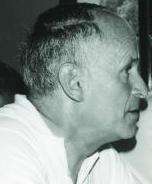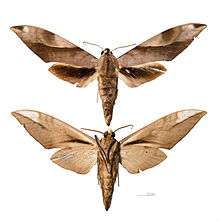Laurent Schwartz
| Laurent Schwartz | |
|---|---|
 | |
| Born |
5 March 1915 Paris, France |
| Died |
4 July 2002 (aged 87) Paris, France |
| Nationality | French |
| Fields | Mathematics |
| Institutions |
University of Strasbourg University of Grenoble École Polytechnique Université de Paris VII |
| Alma mater | École Normale Supérieure |
| Doctoral advisor | Georges Valiron |
| Doctoral students |
Maurice Audin Bernard Beauzamy Georges Glaeser Alexander Grothendieck Jacques-Louis Lions Bernard Malgrange André Martineau Leopoldo Nachbin Henri Hogbe Nlend Gilles Pisier François Treves |
| Known for |
Theory of Distributions Schwartz kernel theorem Schwartz space Schwartz–Bruhat function Radonifying operator Cylinder set measure |
| Influenced | Per Enflo |
| Notable awards | Fields Medal (1950) |
Laurent-Moïse Schwartz (5 March 1915 – 4 July 2002) was a French mathematician. He pioneered the theory of distributions, which gives a well-defined meaning to objects such as the Dirac delta function. He was awarded the Fields Medal in 1950 for his work on the theory of distributions. For several years he taught at the École polytechnique.
Biography
Family
Laurent Schwartz came from a Jewish family of Alsatian origin, with a strong scientific background: his father was a well-known surgeon, his uncle Robert Debré (who contributed to the creation of UNICEF) was a famous pediatrician, and his great-uncle-in-law, Jacques Hadamard, was a famous mathematician.
During his training at Lycée Louis-le-Grand to enter the École Normale Supérieure, he fell in love with Marie-Hélène Lévy, daughter of the probabilist Paul Lévy who was then teaching at the École polytechnique. Later they would have two children, Marc-André and Claudine. Marie-Hélène was gifted in mathematics as well, as she contributed to the geometry of singular analytic spaces and taught at the University of Lille.
Angelo Guerraggio describes "Mathematics, politics and butterflies" as his "three great loves".[1]
Schwartz was a distant relative of oncologist Laurent Henri Schwartz.
Education
According to his teachers, Schwartz was an exceptional student. He was particularly gifted in Latin, Greek and mathematics. One of his teachers told his parents: "Beware, some will say your son has a gift for languages, but he is only interested in the scientific and mathematical aspect of languages: he should become a mathematician."
In 1934, he was admitted at the École Normale Supérieure, and in 1937 he obtained the agrégation (with rank 2).
World War II
As a man of Trotskyist affinities and Jewish descent, life was difficult for Schwartz during World War II. He had to hide and change his identity to avoid being deported after Nazi Germany overran France. He worked for the University of Strasbourg (which had been relocated in Clermont-Ferrand because of the war) under the name of Laurent-Marie Sélimartin, while Marie-Hélène used the name Lengé instead of Lévy. Unlike other mathematicians at Clermont-Ferrand such as Feldbau, the couple managed to escape the Nazis.
Later career
Schwartz taught mainly at École Polytechnique, from 1958 to 1980. At the end of the war, he spent one year in Grenoble (1944), then in 1945 joined the University of Nancy on the advice of Jean Delsarte and Jean Dieudonné, where he spent seven years. He was both an influential researcher and teacher, with students such as Bernard Malgrange, Jacques-Louis Lions, François Bruhat and Alexander Grothendieck. He joined the science faculty of the University of Paris in 1952. In 1958 he became a teacher at the École polytechnique after having at first refused this position. From 1961 to 1963 the École polytechnique suspended his right to teach, because of his having signed the Manifesto of the 121 about the Algerian war, a gesture not appreciated by Polytechnique's military administration. However, Schwartz had a lasting influence on mathematics at the École polytechnique, having reorganized both teaching and research there.
In 1973 he was elected corresponding member of the French Academy of Sciences, and was promoted to full membership in 1975.
Mathematical legacy
In 1950, Schwartz was awarded the Fields medal for his work on distributions. He was the first French mathematician to receive the Fields medal. Because of his sympathy for Trotskyism, Schwartz encountered serious problems trying to enter the United States to receive the medal; however, he was ultimately successful.
The theory of distributions clarifies the (then) mysteries of the Dirac delta function and Heaviside step function. It helps to extend the theory of Fourier transform and is now of capital importance to the theory of partial differential equations.
Popular science
Throughout his life, Laurent Schwartz actively worked to promote science and bring it closer to the general audience. Laurent says : What are mathematics helpful for ? Mathematics are helpful for physics. Physics helps us make fridges. Fridges are made to contain spiny lobsters, and spiny lobsters help mathematicians who eat them and have hence better abilities to do mathematics, which are helpful for physics, which helps us make fridges which...[2]

Entomology
His mother, who was passionate about natural science passed on her taste for Entomology to Laurent. His personal collection of 20, 000 Lepidoptera specimens, collected during his various travels was bequeathed to the Muséum national d'histoire naturelle), the Science Museum of Lyon, the Museum of Toulouse and the Museo de Historia Natural Alcide d’Orbigny in Cochabamba (Bolivia).Several species discovered by Laurent Schwartz bear his name.
Personal ideology
Apart from his scientific work, Schwartz was a well-known outspoken intellectual. As a young socialist influenced by Leon Trotsky, Schwartz opposed the totalitarianism of the Soviet Union, particularly under Joseph Stalin. Schwartz ultimately rejected Trotskyism for democratic socialism.
Schwartz campaigned against the Algerian War.
In danger of being classified as a Jew under the Nazi racial laws, he had to spend parts of World War II in hiding under aliases, predominantly "Laurent Sélimartin". He was related to the Debré family.
On his religious views, Schwartz called himself an atheist.[3]
Books
- Étude des sommes d'exponentielles réelles. Hermann, 1943,[4] new edn. 1959
- Théorie des distributions. Hermann, 2 vols., 1950/1951,[5] new edn. 1966
- Lectures on complex analytic manifolds. Springer, 1986 (Lectures at the Tata Institute, Bombay 1955)
- Séminaire Schwartz in Paris 1953 bis 1961. Online edition:
- Mathematics for the physical sciences. Hermann, 1966
- Analyse mathématique. 2 vols., Hermann, 1967
- Application of distributions to the theory of elementary particles in quantum mechanics. Gordon and Breach, 1968, 1988
- Radon measures on arbitrary topological spaces and cylindrical measures. Oxford University Press, 1973 (Tata Lectures)
- Tenseurs. Hermann, 1975
- Analyse hilbertienne. Hermann, 1979
- Semi-martingales sur des variétés et martingales conformes sur des variétés analytiques complexes. Springer, 1980
- Geometry and probability in Banach Spaces. Springer, 1981
- Cours d' Analyse. Hermann, 1981
- Pour sauver l’université. Editions du Seuil, 1983
- Semi-martingales and their stochastic calculus on manifolds. Presse de l´Universitaire de Montreal, 1984
- Un mathématicien aux prises avec le siècle. Paris 1997, Autobiography, English translation: A mathematician grappling with his century. Birkhäuser, 2001, ISBN 3-7643-6052-6
- Analyse. Hermann, 1998
See also
- Schwartz distribution
- Schwartz kernel theorem
- Schwartz space
- Schwartz–Bruhat function
- Nicolas Bourbaki
Notes
- ↑ A Guerraggio, Laurent Schwartz: political commitment and mathematical rigour, in Mathematical lives (Springer, Berlin, 2011), 157-164.
- ↑ "Site de D. Michel-Amadry"
- ↑ Laurent Schwartz (2001). A Mathematician Grappling With His Century. Springer. p. 193. ISBN 9783764360528.
My parents were atheists, I was an atheist, I never really felt Jewish.
- ↑ Szász, Otto (1946). "Review Étude des sommes d'exponentielles réelles, by L. Schwartz". Bull. Amer. Math. Soc. 52 (11, Part 1): 976. doi:10.1090/s0002-9904-1946-08674-7.
- ↑ Bochner, S. (1952). "Review: Théorie des distributions, by L. Schwartz". Bull. Amer. Math. Soc. 58 (1): 78–85. doi:10.1090/s0002-9904-1952-09555-0.
References
- Schwartz, Laurent (2001). "A Mathematician Grappling with His Century." Birkhauser. ISBN 3-7643-6052-6. (An English translation of Laurent Schwartz's autobiography, "Un mathématicien aux prises avec le siècle," originally published in 1997.)
External links
- O'Connor, John J.; Robertson, Edmund F., "Laurent Schwartz", MacTutor History of Mathematics archive, University of St Andrews.
- Biography of Laurent Schwartz from the American Mathematical Society
- Review of Schwartz's autobiography, same source
- S.S. Kutateladze Sobolev and Schwartz: Two Fates and Two Fames